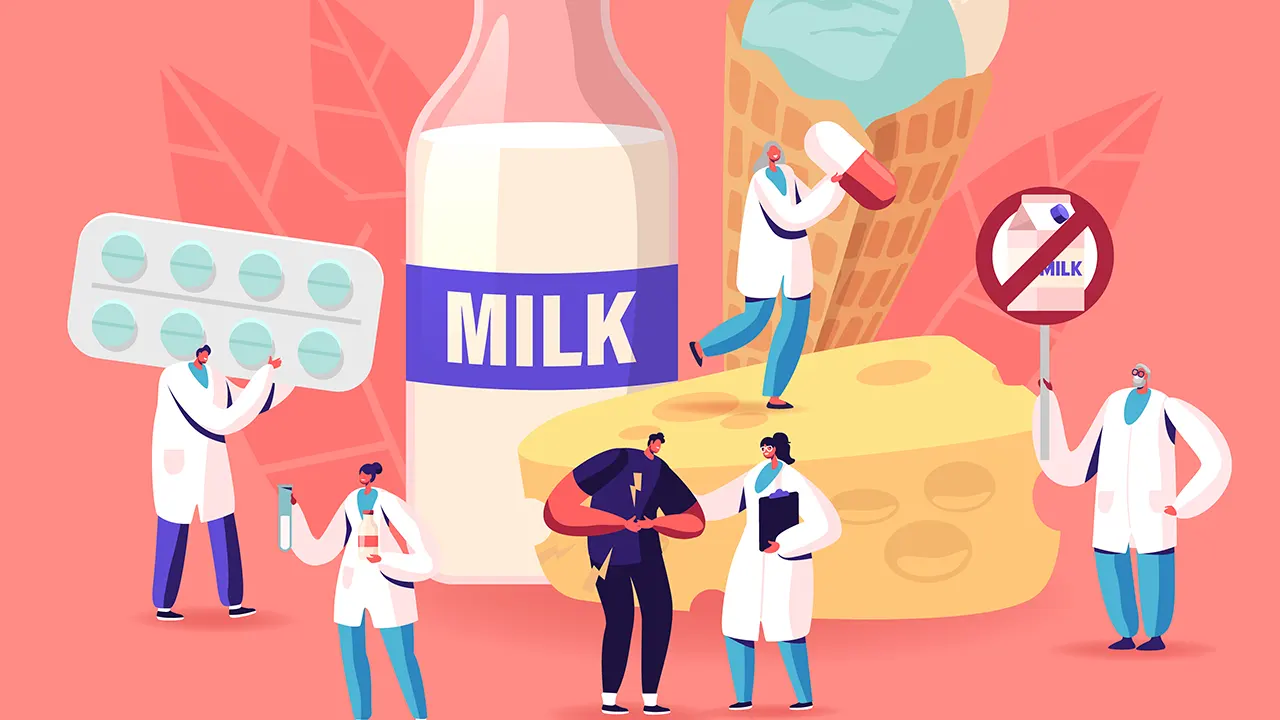When to Suspect a Cow's Milk Allergy in Your Child
Does My Child Have a Cow's Milk Allergy Rash?
Dr. Niorn Boonpuean, a pediatric dermatologist with over 10 years of experience in caring for children with atopic dermatitis, answers these questions. Today, with easy access to social media, when your young child develops a rash, you might search on Google or join Facebook groups. The information you find can often lead to confusion and make you wonder if your child has a cow's milk allergy, as this condition has been widely discussed in recent years.
I am here to help clear up any confusion for parents.
Itchy, inflammatory skin rashes in children can have many common causes, including hives, irritant contact dermatitis, allergic contact dermatitis from products, atopic dermatitis, dermatitis from a food allergy, and others. So, which type of rash should make you suspect a cow's milk allergy?
A cow's milk allergy can present with three main types of skin reactions:
- Immediate Allergic Reactions: These include hives (urticaria) and swelling of the lips (angioedema). In severe cases, other systemic symptoms can occur, such as difficulty breathing due to laryngeal edema or bronchospasm, low blood pressure, and vomiting. Symptoms typically appear within 30 minutes and no later than 4 hours after consuming cow's milk.
- Delayed Allergic Reactions: These often present as an eczema-like rash (dermatitis), where the skin becomes inflamed, red, and may be oozing. Symptoms appear slowly, often days after consumption, though subsequent reactions may appear faster.
- Mixed Reactions (Both Immediate and Delayed)
When to Suspect a Cow's Milk Allergy in Your Child
- When your child develops hives within 30 minutes to 4 hours of drinking cow's milk or eating products containing it, and this reaction occurs every time.
- When consuming cow's milk or related products causes a new eczema-like rash or worsens a pre-existing rash, even with proper skin care and anti-inflammatory treatment. However, assessing the timing in this group is difficult as the reaction is not as immediate.
What Should You Do if You Suspect a Cow's Milk Allergy?
For suspected immediate reactions, it is not recommended to intentionally re-challenge your child with the food at home due to the risk of a severe, life-threatening allergic reaction (anaphylaxis). It is advised to consult a doctor for further testing. The doctor will determine whether skin prick testing or a blood test for food-specific antibodies (IgE) is appropriate.
If a delayed dermatitis reaction is suspected, the doctor will recommend eliminating cow's milk and related products from the child's diet for at least 2-4 weeks. If the rash does not improve, cow's milk is unlikely to be the cause. If it does improve, it's possibly related. Once the rash has completely cleared, cow's milk is reintroduced. If the rash returns, it helps confirm the diagnosis that the rash is indeed related to cow's milk. This is known as an elimination and rechallenge test. If, after reintroduction, the rash does not flare up again, then cow's milk is not the cause, and the child does not need to avoid it. This principle can be applied to other suspected food allergies as well.
The definitive confirmation of the diagnosis is the Double-Blind, Placebo-Controlled Food Challenge (DBPCFC). However, the disadvantages are that it requires observation in a hospital setting and involves complex procedures, as blinded food preparations are necessary. Neither the patient nor the supervising doctor knows whether the real food (allergen) or a placebo is being given; only the preparer knows. This is done to reduce bias in interpreting the results and to alleviate fear of eating the suspected food. It is the gold standard for diagnosis and also helps determine the threshold at which the patient can tolerate the food or begins to react.
If you suspect a cow's milk allergy rash, it is recommended to consult a dermatologist or an allergist. This is to avoid unnecessarily stopping or changing milk formulas or eliminating other foods, which could affect the nutritional status of the child or the mother.





